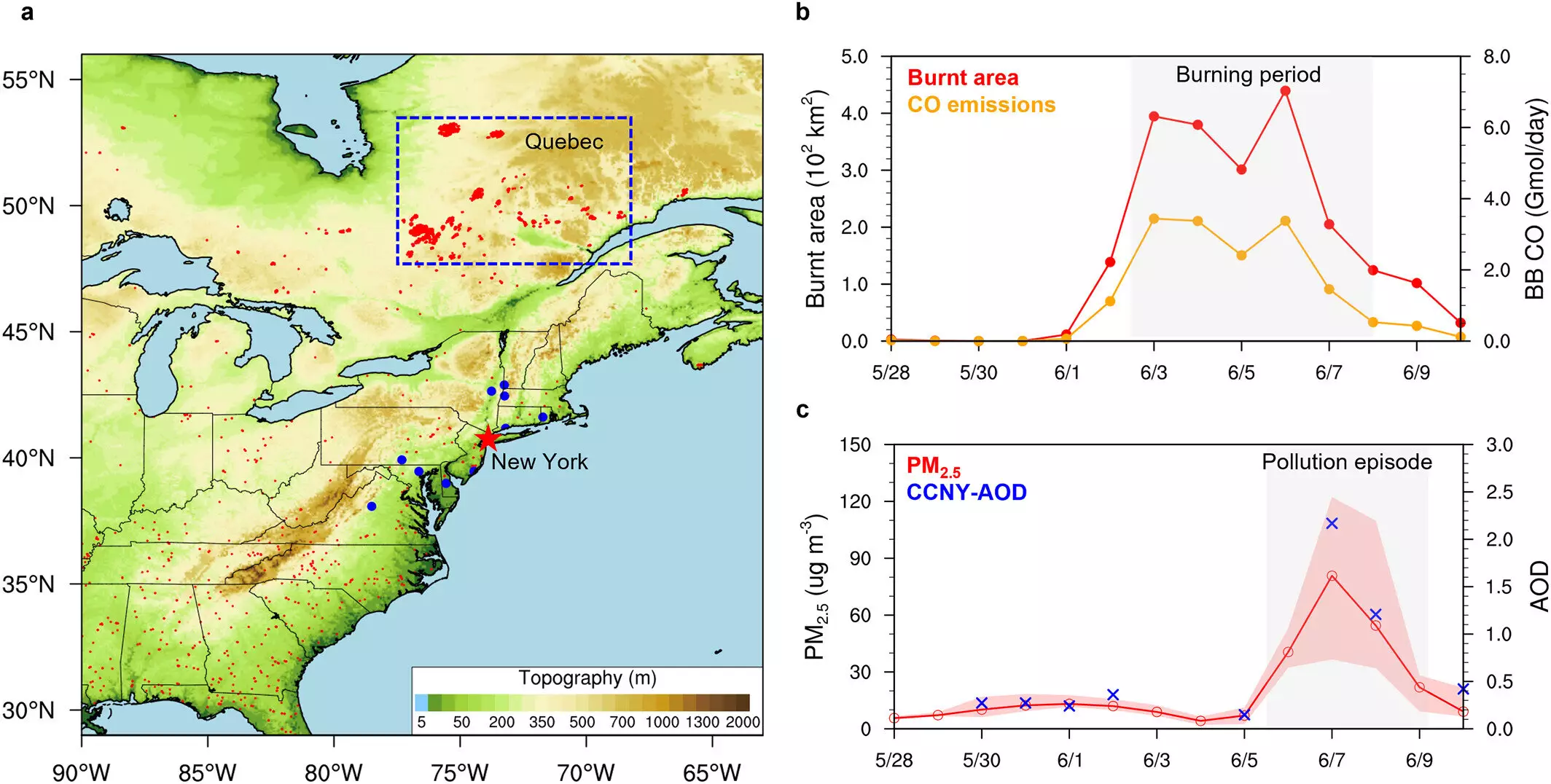Wildfires are not just limited to lower latitudes with extreme heat; they can also occur in Arctic regions, as seen in the recent wildfires in Russia. These disasters pose significant threats to both local communities and wildlife, causing destruction of habitats and infrastructure, as well as affecting regional air pollution and public health. Additionally, the impact of wildfires extends to global temperatures and meteorological cycles, such as cyclones, which are air masses rotating around zones of low pressure bringing extreme weather conditions.
A recent study published in Geophysical Research Letters has highlighted the connection between the intensification of mid-latitude cyclone activity and the occurrence of wildfires. Using a case study from Canada, researchers found that wildfires can have an augmentation effect on wind and cloud formation, exacerbating the transport of wildfire smoke over vast distances. In June 2023, Quebec’s boreal forest experienced 200 wildfires in a week, burning more than 156,000 km2 of land and releasing 1.3 Pg of CO2. This resulted in degraded air quality in eastern Canada and North America, with particulate matter concentrations exceeding safe levels outlined by the World Health Organization.
Dr. Zilin Wang and colleagues from Nanjing University analyzed the interaction between wildfires and meteorological systems using high-resolution records of trace gas and particle emissions. They found that cyclone activity played a crucial role in transporting wildfire smoke southwards across northeast America, reaching as far as New York. The stagnation of the cyclone over affected areas deepened aerosol concentrations, leading to changes in Earth’s energy balance and radiative forcing. The smoke aerosols from wildfires can either reflect or absorb incoming solar radiation, causing cooling or warming effects on the atmosphere.
The research also highlighted the importance of smoke aerosols in forming cloud condensation nuclei, increasing cloud formation and longevity. This contributes to the enhancement of cyclonic cloud activity and can impact surface wind speeds, atmospheric moisture, and air temperature. These factors create a positive feedback loop that exacerbates wildfire activity and has long-term implications for meteorological systems.
As climate change continues to drive the prevalence of wildfires, understanding the impact of smoke aerosols on meteorological systems becomes increasingly important. Mitigating the effects of extreme weather phenomena requires a comprehensive understanding of how wildfires interact with and influence cyclone activity, cloud formation, and global temperatures. Research in this area is crucial for developing strategies to address the increasing frequency and intensity of wildfires in the future.
Overall, the study sheds light on the complex relationship between wildfires and meteorological systems, emphasizing the need for proactive measures to mitigate the impact of wildfires on global climate and weather patterns. By understanding the interconnectedness of these phenomena, researchers can work towards creating more resilient and sustainable solutions to address the challenges posed by wildfire events.


Leave a Reply